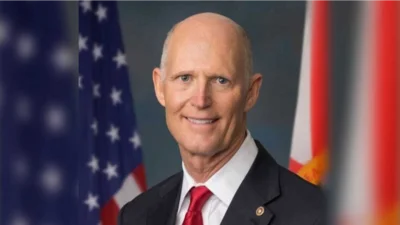Dear Commissioner von Eschenbach:
As Ranking Member of the Committee on Finance (Committee), I have a responsibility to the more than 80 million Americans who receive health care coverage under the Medicare and Medicaid programs to oversee the proper administration of these programs and ensure that taxpayer and beneficiary dollars are appropriately spent. This responsibility includes oversight into the actions of executive branch agencies, including the activities of the Food and Drug Administration (FDA).
Today, the Journal of the American Medical Association (JAMA) released a study which claims to find an association between the chemical Bisphenol A (BPA) and a host of other health effects including increased prevalence of cardiovascular disease, diabetes, and liver enzyme abnormalities.[1] This study follows a report released on Sept. 3, 2008, by the National Toxicology Program (NTP), which is a part of the National Institutes of Health (NIH).
According the NTP’s report on BPA, there is some concern that low doses of BPA may affect development of the brain. Further, the NTP report voiced concern that BPA may cause behavioral effects in fetuses and children.[2] These findings are important because BPA is used in plastics that serve as storage for food and beverages.
I understand that later today, FDA is holding a panel on the possible health effects of BPA. This panel will peer-review and discuss a draft risk assessment on BPA that FDA released in August 2008.[3] But according to news reports, this draft risk assessment only contains studies that were funded by industry and ignores many studies funded by the NIH.[4]
In fact, Jerry Heindel, the scientific program administrator for the National Institutes of Environmental Health Sciences told a reporter that the studies in FDA’s risk assessment were old fashioned and did not go far enough to capture the effects of BPA.[5]
I am concerned that the FDA by its actions is determining that NIH-funded studies do not merit a review by the FDA safety panel on BPA. Further, I am concerned that the FDA’s draft risk assessment does not appear to list the name of the authors who wrote the assessment.
Accordingly, please respond to the following questions and request for documents. In responding, please repeat the enumerated request followed by the appropriate answer.
1) Why did FDA decide not to include NIH funded studies for this draft risk assessment on BPA?
2) According to Dow Jones, FDA is only allowing studies that rely on Good Laboratory Practices in the draft risk assessment. This means that NIH-funded studies were not allowed. Does FDA allow studies that do not use Good Laboratory Practices when making decisions on drug safety?
3) Please provide the names and titles of any individuals who worked on drafting the BPA risk assessment.
4) Please provide all internal communications regarding FDA’s draft risk assessment on BPA, including drafts.
5) Please provide all communications and documents received by the FDA from the American Chemistry Council and/or producers of Bisphenol A regarding FDA draft risk assessment on BPA.
Thank you for your cooperation and attention to this important matter. Please respond to the questions and requests set forth in this letter by no later than Sept. 30, 2008.
Sincerely,
Charles E. Grassley United States Senator Ranking Member of the Committee on Finance
-------------------------------------------------------------------
[1] David Melzer et. al. “Association of Urinary Bisphenol A Concentration with Medical Disorders and Laboratory Disorders in Adults" JAMA, Sept. 17, 2008.
[2] Jared A. Favole “FDA to Face Public Upbraiding Over Ingredient in Plastic," Dow Jones Newswires, September
11, 2008.
[3] Food and Drug Administration, “Draft Risk Assessment of Bisphenol A for Use in Food Contact Applications,"
Aug. 14, 2008.
[4] Jared A. Favole “FDA to Face Public Upbraiding Over Ingredient in Plastic," Dow Jones Newswires, September
11, 2008.
[5] Id.









